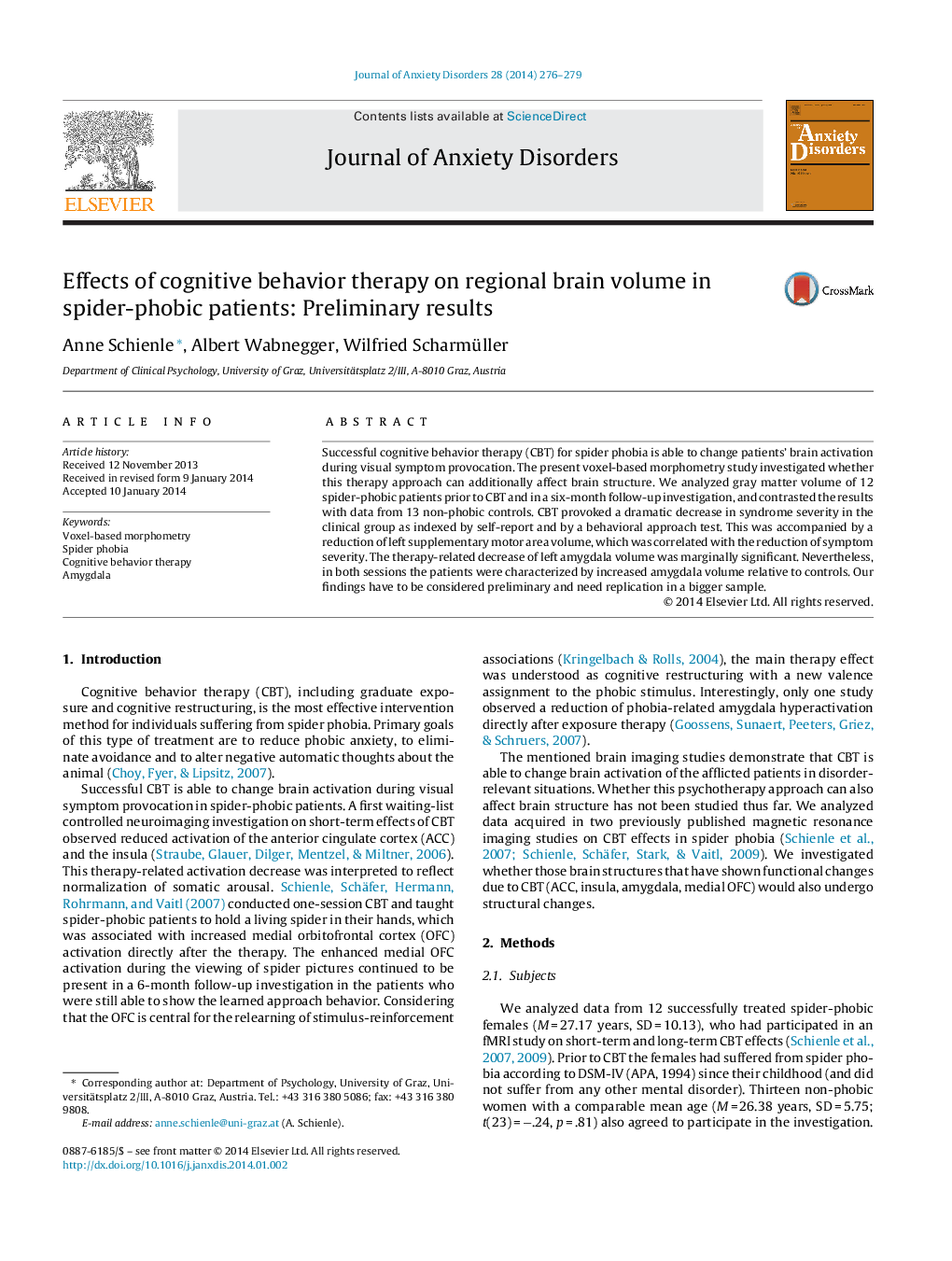| Article ID | Journal | Published Year | Pages | File Type |
|---|---|---|---|---|
| 909424 | Journal of Anxiety Disorders | 2014 | 4 Pages |
•Voxel-based morphometry study on cognitive behavior therapy (CBT) effects.•Enhanced amygdala volume in spider-phobic women prior and post CBT.•Reduction of supplementary motor area volume due to CBT.
Successful cognitive behavior therapy (CBT) for spider phobia is able to change patients’ brain activation during visual symptom provocation. The present voxel-based morphometry study investigated whether this therapy approach can additionally affect brain structure. We analyzed gray matter volume of 12 spider-phobic patients prior to CBT and in a six-month follow-up investigation, and contrasted the results with data from 13 non-phobic controls. CBT provoked a dramatic decrease in syndrome severity in the clinical group as indexed by self-report and by a behavioral approach test. This was accompanied by a reduction of left supplementary motor area volume, which was correlated with the reduction of symptom severity. The therapy-related decrease of left amygdala volume was marginally significant. Nevertheless, in both sessions the patients were characterized by increased amygdala volume relative to controls. Our findings have to be considered preliminary and need replication in a bigger sample.
